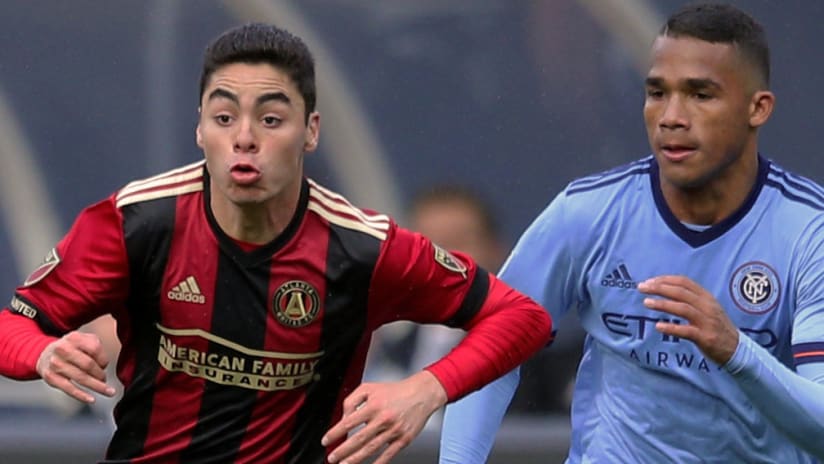What is the path to success in soccer: Jumping on the hot trend, or finding the differentiating move that will give your team a leg up on the rest of the pack?
It's not confined to soccer alone, but in this sport we can see trends and differentials sweep the globe. Consider formations used: One day, 4-4-2 reigns supreme, before it's swept out for 4-2-3-1 or 4-3-3, or 3-5-2. The 4-4-2 is not currently the rage, but don't worry, it will come around again at some point, as these things tend to run in cycles.
Another trend we see, both in MLS and abroad, is the regions where players are bought. You'll notice that while players can be signed from a particular country or league at any point, signings often happen in clusters. One day, Colombia or Finland is the hot market. The next, it's Venezuela or a return to the evergreen fertility of Argentina.
Now, a new trend has emerged the past few seasons in MLS: The arrival of young South Americans, players with the capability of becoming breakout stars. It's not a brand-new phenomenon – FC Dallas helped pave the way with Fabian Castillo from 2011-16 – but the volume and general caliber of player being signed has been elevated in the past year-plus.
Atlanta United have built their roster around a trio of these players, in Miguel Almiron (pictured above), Josef Martinez and Hector Villalba. They've since added Franco Escobar and Jose Hernandez and could acquire even more top-tier talents before the 2018 season kicks off.
But it's not a single team cornering a market – multiple clubs are attempting to expand the marginal differences. NYCFC have midfielder Yangel Herrera (also pictured above), with newcomer Jesus Medina for the new season. D.C. United have Luciano Acosta, Ulises Segura and now Junior Moreno, Real Salt Lake have Jefferson Savarino, Vancouver Whitecaps FC have Yordy Reyna and are adding Anthony Blondell, and the Houston Dynamo have Tomas Martinez as part of their young, exciting attacking corps. The Portland Timbers have apparently opened a pipeline from Saprissa, with Julio Cascante joining David Guzman. LAFC hope Diego Rossi (pictured below) will be the next impact player in this class for their expansion season. And otherclubskeeptrying.
At this point, it's not a coincidence that MLS teams are signing South Americans in their teens and early 20s who are expected to contribute immediately – it's a full-blown trend.

What's in it for MLS teams? That's easy to answer. By signing higher-profile youngsters, with plenty of potential and many costing less than older players who have a similar talent level, MLS teams are able to pick up impact players who they may be able to sell in the future, ideally at a tidy profit. And picking up players who very well could be on their way to Europe at some point increases the prestige of MLS overall, as a league that can be a good stop on the way to European glory.
But what's the appeal for players? The example of NYCFC may be a good lesson here.
Herrera is a loanee from NYCFC's sibling club Manchester City, and with the Premier League side absolutely stacked, leaving the teenage holding midfielder unable to see first-team action, the Venezuelan's season in New York last year gave him important regular playing time to aid his development and improved NYCFC, too. The arrangement is a win-win for both sides, and the reports that he'll be back at Yankee Stadium in 2018 is good news for him, the team and the league.
Beyond the opportunities for playing time in a competitive league, it will be interesting to see what the future holds with this trend. Assuming it continues into the future, with more of these young South Americans panning out than not, what will happen to the evolution of MLS?
Will younger Designated Players just getting their careers underway become the catalysts for title-winning sides? Could a key South American youngster help lead an MLS team to CONCACAF Champions League glory? Liga MX has often been the preferred North American destination for South Americans, but perhaps CCL success with such players making a major contribution will give MLS an upper hand on the rivalry between the North American leagues?
That remains to be seen, of course. But with more of the likes of Herrera, Almiron and Martinez opting for MLS and playing well in their time here, the South American youth revolution looks to be well and truly on these days.
It could ultimately transform the balance of power in North American soccer, too.
This article, originally published on January 2, 2018, was updated on Jan. 4 to include additional signings and reports.












